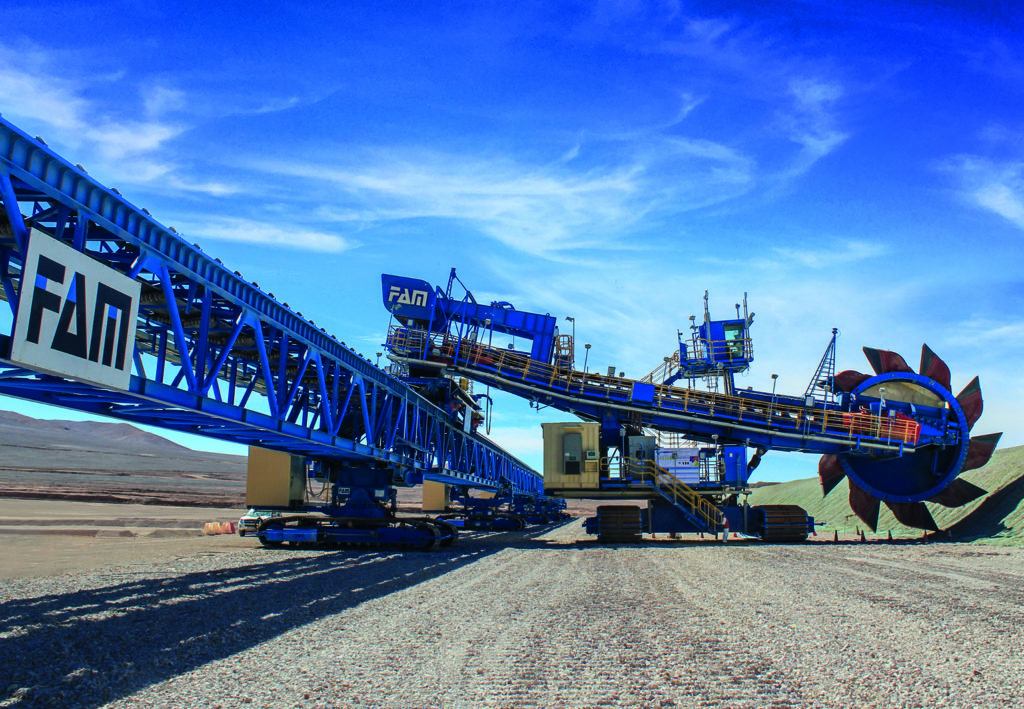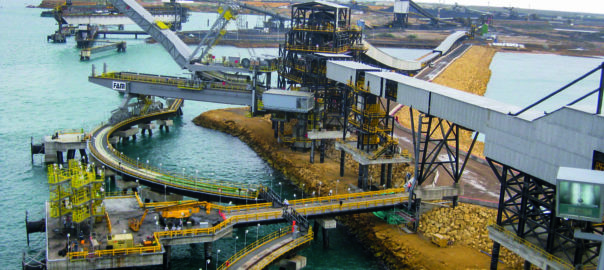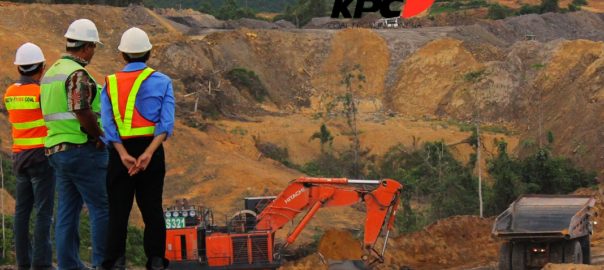In June, BEUMER Group completed the acquisition of the FAM Group of Magdeburg, Germany, in the process, increasing its conveyor system and loading technology offering and becoming a significant player in the in-pit crushing and conveying (IPCC) space.
Close to six months after closing, IM put some questions to Stefan Hotz, Director Sales FAM Group, to find out how the integration of the two companies is going and how the transaction should strengthen the enlarged company’s market position in the minerals and mining sectors.
IM: Where – regionally – do you see the most opportunities in the mining sector for the integrated company to gain market share? South America has been a particularly strong market for FAM in the past; do you see this as a big opportunity for the integrated group?
SH: FAM – member of BEUMER Group – is one of the world’s leading full-range suppliers of bulk handling and processing systems. The customers come from more than 80 countries and the solutions are successfully in use everywhere. With BEUMER’s acquisition of the FAM Group, we were able to expand our portfolio to include bulk material handling, crushing technology as well as conveyor technology. Customers receive solutions from a single source with which they can work efficiently. In addition to engineering and project execution competences, FAM also brings the complete value chain, including after-sales service, to the BEUMER Group. This makes us a sought-after partner worldwide.
Of course, South America is a strong market, especially countries with iron ore and copper resources such as Brazil, Chile and Peru. For example, in Peru, the mining companies are transporting iron ore to the stockyards, which are often located at distances of several kilometres from the port. Callao Port, for example, is home to the most modern and largest ship loading terminal in the country. A reliable and safe connection for material transport is required, which at the same time ideally prevents the emission of particles into the atmosphere. Conveyors are the preferred solution here that can be individually adapted to the respective environmental and technical requirements and to the topography, as well as protect the environment from dust emissions.
IM: Are you expecting to increase your manufacturing capacity or acquire new premises to fulfil this demand, or do you have enough capacity to serve these growing markets in the near-to-medium term?
SH: The FAM Group has subsidiaries in Brazil, Chile, China, Canada and India. In addition, there are the numerous subsidiaries and agencies of the BEUMER Group. This means that we are very well positioned worldwide and can optimally serve these growing markets in the short to medium term. In our project business it’s a must to be, on the one hand, close to our customers but, on the other hand, using our global resource network and know-how to balance workloads. But, of course, we expand the network of our subsidiaries if we notice that we cannot serve certain regions with the desired reliability.
IM: Is the company already pursuing mining projects that involve the solutions/expertise of FAM and BEUMER Group? Can you elaborate on what type of projects these are and what solutions they involve (ie overland conveyors, bucketwheel excavators, spreaders, etc)?
SH: Yes, we are already in the process to support our mining clients from one hand, integrating FAM and BEUMER solutions. For example, we are working on one large project for gold extraction, where BEUMER is providing the long-distance overland conveyor and FAM supports the client with spreader technology to dump overburden. We have combined this with an attractive digitalisation and service package to ensure optimisation of the client’s total cost of ownership.

IM: With this transaction the company has effectively become a major player in the IPCC space. Do you see this as a major growth area for BEUMER Group going forward?
SH: In general, with this new setup, we expand our product portfolio and we are significantly strengthening our market position worldwide, especially in the field of large-scale mining equipment. But the most important thing is that we can provide our customers with even more comprehensive support over the whole value chain from pit to port, including digitalisation and service for our projects. Due to our many years of experience, we also support our clients in complex upgrade, lifetime extension and refurbishment jobs for existing machines. This means we avoid interfaces and customers now have only one contact.
IM: Do you see your ability to offer not only the solutions but also the engineering and design expertise underpinning these solutions as differentiating your offering from your competitors in the IPCC market? What other differentiators will serve you well in winning business in this market?
SH: I don’t want to say much about our market competitors, but I am sure that together with FAM we stand out positively from the market, specifically for continuous soft rock and overburden IPCC applications. Furthermore, we have long-term partners with whom we are serving the needs of our clients in terms of mine planning and pre-engineering. This ensures that we are defining a solution for the client with a focus on CAPEX and OPEX optimisation. Specifically for IPCC applications, we are convinced of adding value during the first months of operation by providing integrated training and service packages to ensure successful implementation of continuous mining systems after commissioning. In doing so, the specialism is characterised in particular by distinctive engineering at a high level.
IM: What other areas of your business do you see growing with the need for mining companies to move away from their reliance on diesel-powered mobile mining equipment for material transport? Are you seeing more interest in your overland conveyor portfolio, for instance?
SH: Our belt conveyor systems are used successfully all over the world. They solve complex transport problems for any bulk material and are suitable in many cases as an economic alternative to truck transport. While the basic task – to transport bulk materials from the mine to the final discharge point – appears very comparable, no two systems are alike. The range of potential materials to be conveyed, alone, requires individual consideration of the components to be used in terms of wear resistance or the maximum permissible gradients of a conveyor. In addition, above all, the mass flow to be transported and the height to be overcome determine the dimensioning of the drive unit of an overland conveyor. Plants at high altitudes pose a further challenge. At altitudes above 4,000 m, as is often the case in the Andes for example, it must be taken into account that the air pressure and, thus, the density of the air decreases with increasing altitude. This reduces both the cooling effect and the insulating capacity of the air. We are the right project partner for all these challenges.








